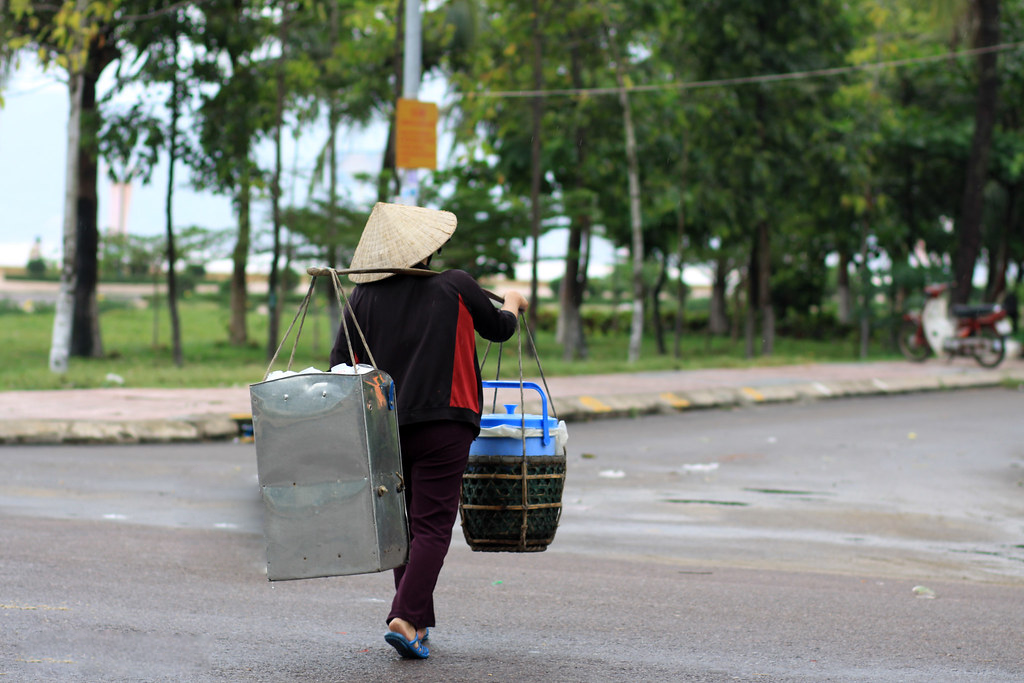
Summer was extremely interesting for the rural children that year. We had ninety days of free time; at noon we could all gather under the bamboo roots in the garden to fish, play checkers, and...
And of course, there was also the anticipation of the tofu stall of Miss Ba, Tun’s mother, who was in the same class as us. My house was not far from Miss Ba’s house, so there were mornings when I used the excuse of going over to read books with Tun, and I had the chance to watch and learn a little bit about his mother’s tofu cooking.
According to Tun, the night before, the soybeans - the main ingredient of this dish - were sifted by his mother to pick out the damaged and rotten beans and give them to the chickens. Only the round, large, yellow beans were selected and soaked in water.
From 4am, Miss Ba went to fetch water from the well, let the water settle until clear, then started grinding the soaked soybeans. For up to an hour, Miss Ba sat meticulously, scooping each ladle of soybeans, adding water, and using all her strength to grind the stone mill to make it very fine. Tun helped his mother wash a large bundle of pandan leaves to drain the water.
After grinding, the beans are filtered thoroughly to remove all the solids and leave only the fine powder. Water is added in the correct amount and brought to a boil, while stirring constantly with chopsticks so that the powder water does not settle at the bottom of the pot and burn.
The scent of pandan leaves mixed with bean water creates an attractive flavor that stimulates the sense of smell and taste of every growing child.
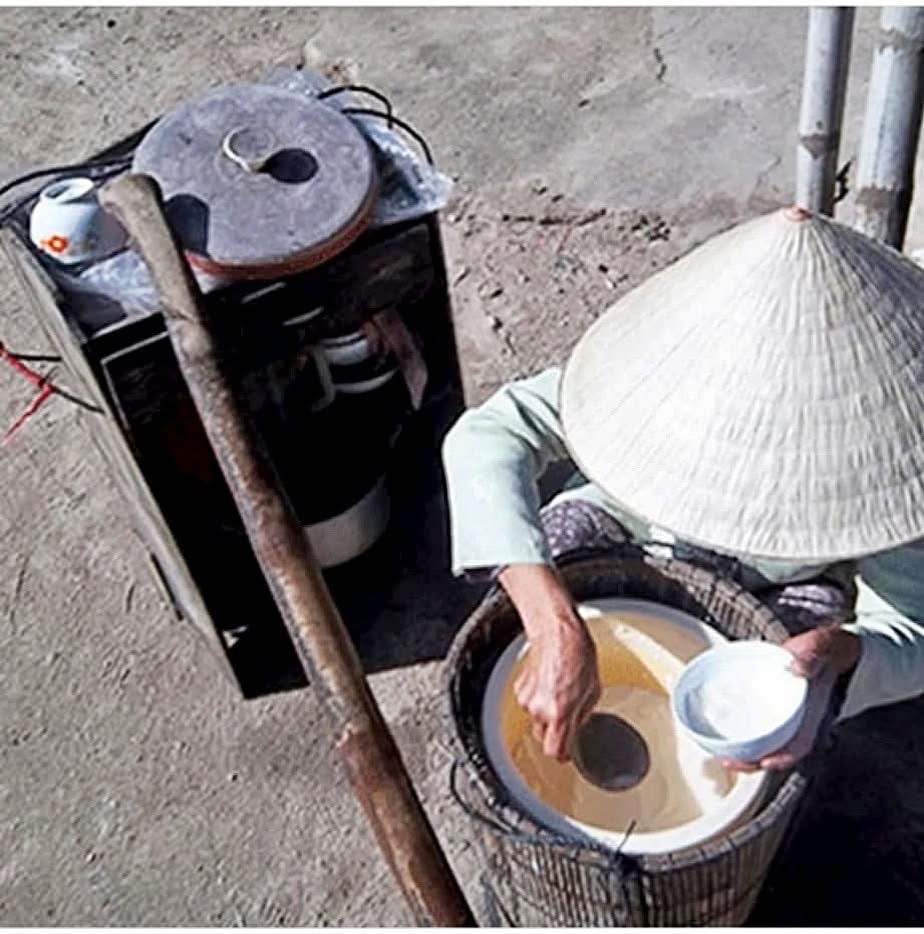
Still curious, I lingered to watch the next steps. Taking a slightly wide-mouthed, 6-inch-tall, dry earthenware jar, Miss Ba smeared a layer of water powder around the inside of the jar (when I asked, I learned it was a thickening agent), then poured in the cooked bean water and placed it in a bamboo basket filled with straw to keep warm.
After that, she took out some bowls of sugar, chopped them into pieces, and urged Tun to peel and pound the ginger. The smell of sugar and ginger spread in the air, bringing me back to the days before Tet, in the small kitchen my mother was boiling a pot of sugar for a batch of popcorn...
While they were engrossed in their summer afternoon game of skipping naps, they looked up and saw a tall, thin figure with a carrying pole on his shoulder and a familiar, hoarse voice calling out: "Who wants tofu?"
The hard-working woman carried a pair of poles on her shoulder, with one side holding a small wooden cabinet with three compartments. The top compartment held a pair of bowls, a small compartment for spoons, the second compartment held a kettle of sugar water with a banana leaf stopper on the spout; the last compartment held a basin of water for rinsing dishes with a few pandan leaves added to create a fragrance and to keep the water from spilling out. At the other end of the pole was a bamboo basket containing tofu.
Miss Ba carried the tofu with small, gentle steps to avoid shaking it, causing the tofu to crystallize the whole day's effort and this is the main source of income for the whole family.
Every time a customer orders, Ms. Ba stops at a clean, shady place, opens the tofu jar, uses an aluminum ladle to cut soft tofu pieces and place them around the bowl before adding sugar. The bowl of white tofu mixed with light brown sugar water and a few strands of yellow ginger give off an enticing aroma that entices the eater's sense of smell.
On hot days, a bowl of tofu helps quench thirst; on cold winter days, hot tofu mixed with ginger adds a little energy to dispel the dampness and cold. This is a wonderful gift from the countryside that everyone has enjoyed many times during their rural childhood.
Modern tofu is still cooked the same as traditional, but for convenience, people use brown sugar to make the liquid and the seller no longer has to carry it on foot like before. However, today's bowl of tofu is not as fragrant as the taste of childhood, perhaps when people get older they are no longer too interested in sweets or are indifferent because they are too full?
Maybe for many reasons? For the same reason, today, all over the streets, towns, and cities, there are many shops selling Singaporean tofu, Yumi fresh tofu… prepared in a variety of ways.
Chefs have launched a series of new menus for a traditional dish to attract the attention of all ages. Looking at the menus at these restaurants, we can see the richness of the old hometown gift that has been combined and processed in many forms and flavors...
But for someone who loves nostalgia like me, the rustic, simple, sweet and fragrant taste of Miss Ba's tofu bowl from my childhood still lingers in my senses even though half a lifetime has passed. The scent of the countryside, the scent of my childhood is forever imprinted and engraved in my mind like an engraving on the timeline of life.
Source: https://baodanang.vn/thuc-qua-que-ngay-nang-nong-3298527.html







![[Photo] Binh Trieu 1 Bridge has been completed, raised by 1.1m, and will open to traffic at the end of November.](https://vphoto.vietnam.vn/thumb/1200x675/vietnam/resource/IMAGE/2025/10/2/a6549e2a3b5848a1ba76a1ded6141fae)
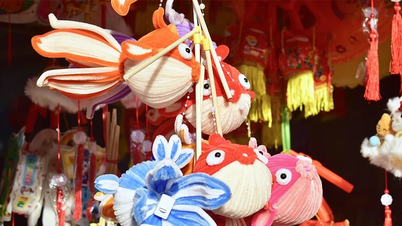


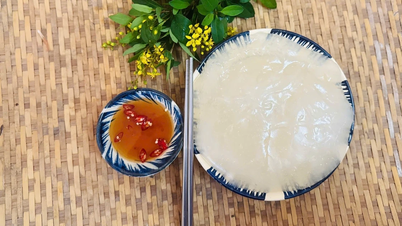



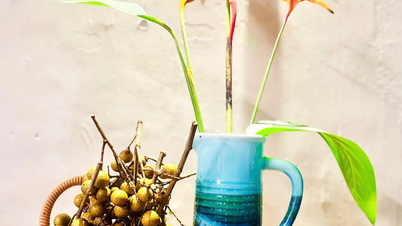


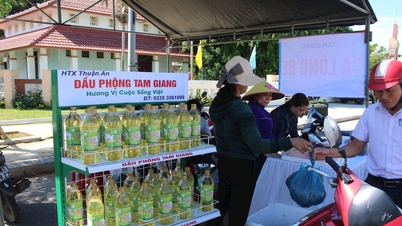
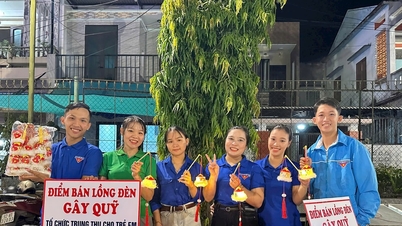








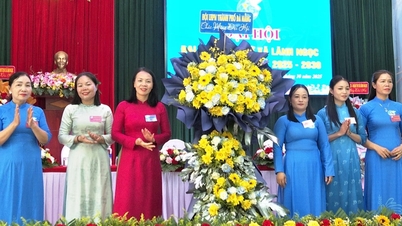


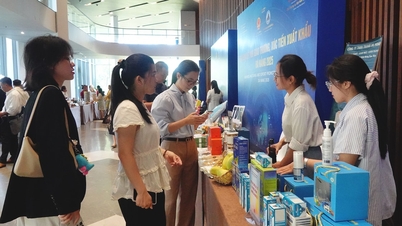





















































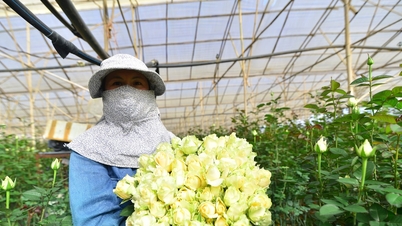

![G-DRAGON 2025 WORLD TOUR [Übermensch]](https://vphoto.vietnam.vn/thumb/402x226/vietnam/resource/IMAGE/2025/10/3/0dec353013874c2ead28385a8c4ccf55)

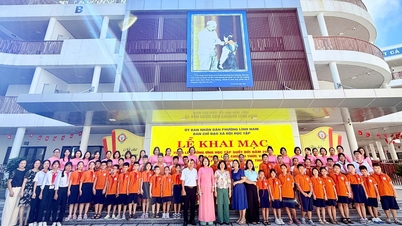













Comment (0)